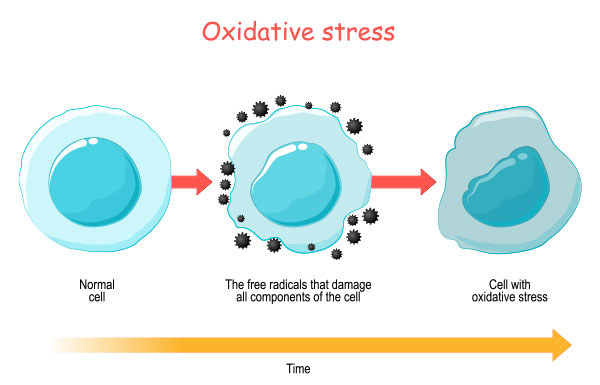ECONOMICS OF COFFEE
Coffee consumption is the leading beverage, worldwide, just behind water, with its 2019 sales exceeding that of 87 billion dollars within the United States alone.1,2 Coffee remains one of the most widely and globally traded commodities, supporting the livelihoods of over 100 million individuals, and 26 million farmers across 52 countries.2(1) The highest producers of coffee in 2017 included Brazil (2.87 metric tonnes), Vietnam (1.54 metric tonnes), and Colombia (0.75 metric tonnes).8
COFFEE IS TASTY, BUT WHAT’S INSIDE?
Most individuals consume coffee for its stimulating effects via caffeine. However, the taste and aromas of coffee are derived from an excess of 950 biochemical compounds, after roasting.3 Well-studied compounds within coffee include caffeine (CAF), trigonelline (TRG), and chlorogenic acids (CGA); constituents of coffee beans, which define their flavours/aromas, characterize species, and confer health benefits.3(1) However, it should be noted that other factors affect aroma and flavour to include bean varieties, environmental conditions, packaging, storing, brewing, processing, and serving methods.4
CONTRIBUTIONS OF CAF, TRG, AND CGA
CAF
- is an alkaloid which induces bitterness of coffee3(2)
- remains stable throughout the roasting process3(2)
- is a stimulant12
TRG
- is an alkaloid that contributes to the aroma of coffee3(2)
- contributes to flavor3(2)
- helps control blood sugar/blood lipids, is neuroprotective, antibacterial, antiviral, antimigraine, antithrombotic, and has anti-tumor activities10
CGA
- contributes to color, aroma, and acidity of coffee3(2)
- is a phenolic compound3(2)
- dominates in its contribution of phenolic compounds in coffee3(2)
- has widespread antioxidant and anti-inflammatory properties11
HOW CAN COFFEE BE BENEFICIAL TO HEALTH?
As mentioned in the previous section, coffee contains CGA; a substance, which not only contributes to aroma and flavour, but one which also harbours high concentrations of phenolic compounds.3(1) Phenols are acknowledged as potent antioxidants that support antiviral, antimicrobial, anti-thrombotic (prevent blood clotting), anticancer, antiallergic, hepatoprotective (protecting the liver), and anti-inflammatory processes within the body.5,6 Interestingly, phenols exhibit a significantly higher antioxidant capacity than commonly used antioxidant vitamins.5(2)
MORE ON ANTIOXIDANTS
Antioxidants are critical to homeostasis as they counter/control the potentially destructive nature of free radical generation/oxidation. Oxidation is a physiological process (stimulated from endogenous and exogenous sources) that, if left uncontrolled, can and will destabilize and destroy cellular components, enzymes, and DNA (i.e., oxidative stress).7 Since oxidative stress induces fundamental changes at the cellular level (i.e., the basic constituents of tissues and organs), it is thought to be a causative factor in the manifestation of liver/renal disorders, respiratory distress syndrome, cardiac/cerebral ischemia, allergic inflammation, rheumatic (i.e., arthritic) diseases, cancer, atherosclerosis, and neurological conditions (i.e., Alzheimer’s disease).7(515)
OXIDATIVE STRESS AND ANTIOXIDANTS
Please find additional articles that I have written, which have explored oxidative stress from free radical generation and methods of managing the same in greater detail:
Link: Antioxidants and Cell Health
Link: Antioxidants and Tracking Oxidative Stress
Link: Lipid Oxidation Despite Presence of Adequate Antioxidants
DEGREE OF PHENOLIC COMPOUNDS IN COFFEE
Interestingly, coffee possesses some of the highest concentrations of phenolic compounds (200-550 mg/cup) when compared to other popular sources such as tea (150-400 mg/cup), and red wine (150-400 mg/cup).9 Due to the popularity of coffee, intake of such drinks provides a substantial contribution to antioxidant intake according to Yashin et al.9(236)
OPTIMAL DOSES OF COFFEE
Up to 400 mg/day of caffeine, equal to approximately 4 cups of brewed coffee, is considered safe with no adverse side effects.13,14 Caution should, however, be implemented amongst pregnant/breastfeeding women (limited to <200 mg/day) and children consuming such levels of caffeine.14 Furthermore, awareness of side effects from excessive caffeine intake should be noted such as:
- insomnia14
- headache14
- irritability14
- nervousness14
- increased heart rate14
- frequent urination14
- muscle tremors14
CONCLUSIONS
Coffee consumption is one of the leading beverages consumed, worldwide. Coffee also remains one of the most widely and globally traded commodities, supporting the livelihoods of over 100 million individuals, and 26 million farmers across 52 countries. Coffee contains a myriad of health promoting compounds which supports antiviral, antimicrobial, anti-thrombotic (prevent blood clotting), anticancer, antiallergic, hepatoprotective (protecting the liver), and anti-inflammatory processes within the body. Thus, coffee is not simply a convenient beverage replete with satisfying aromas and flavours; evidence has suggested that optimal consumption, as part of a larger and more robust set of exercise, nutrition, and lifestyle interventions, can help individuals reclaim their health, longevity, and overall quality of life.
References
1. Butt M, Sultan T. Coffee and its consumption: Benefits and risks. Crit Rev Food Sci Nutr. 2011;51(4):363-373.doi:10.1080/10408390903586412.
2. Rhiney K, Guido Z, Knudson C, et al. Epidemics and the future of coffee production. Proc Natl Acad USA. 2021;118(27):1-10. doi:https://doi.org/10.1073/pnas.2023212118.
3. Sualeh A, Tolessa K, Mohammed A. Biochemical composition of green and roasted coffee beans and their association with coffee quality from different districts of southwest Ethiopia. Cell. 2020;6(12):1-9. doi: https://doi.org/10.1016/j.heliyon.2020.e05812.
4. Senide D, Chambers E. Coffee flavor: A review. MDPI. 2020;6(44):1-25. doi: 10.3390/beverages6030044.
5. Kumar N, Goel N. Phenolic acids: Natural versatile molecules with promising therapeutic applications. Biotechnol Rep. 2019;24:1-10. doi:https://doi.org/10.1016/j.btre.2019.e00370.
6. Poole R, Kennedy OJ, Roderick P, Fallowfield JA, et al. Coffee consumption and health: Umbrella review of meta-analyses of multiple health outcomes.BMJ. 2017;359:1-18. doi:10.1136/bmj.j5024.
7. Lord RS, Bralley JA. Laboratory Evaluations for Integrative and Functional Medicine. 2nd ed. Duluth, GA: Genova Diagnostics; 2012.
8. Gorecki M, Hallman E. The antioxidant content of coffee and its in vitro activity as an effect of its production method and roasting and brewing time. Antioxidants. 2020;9(4):1-10. doi: 10.3390/antiox9040308.
9. Yashin A, Yashin Y, Wang J, et al. Antioxidant and antiradical activity of coffee. Antioxidants. 2013;2(4):230-245. doi:10.3390/antiox2040230.
10. Zhou J, Chan L, Zhou S. Trigonelline: A plant alkaloid with therapeutic potential for diabetes and central nervous system disease. Curr Med Chem. 2012;19(21):2523-3531. doi: 10.2174/092986712801323171.
11. Tajik N, Tajik M, Mack I, et al. The potential effects of chlorogenic acid, the main phenolic components in coffee, on health: A comprehensive review of the literature. Eur J Nutr. 2017;56(7):2215-2244. doi:10.1007/s00394-017-1379-1.
12. Bae JH, Park JH, Im SS, et al. Coffee and health. Integr Med Res. 2014:189-191. doi: http://dx.doi.org/10.1016/j.imr.2014.08.002
13. Cornelis M. The impact of caffeine and coffee on human health. Nutrients. 2019;11(12):1-4. doi: 10.3390/nu11020416.
14. Caffeine: How Much is Too Much? Mayo Clinic. Updated March 19, 2022. Accessed June 17, 2022. https://www.mayoclinic.org/healthy-lifestyle/nutrition-and-healthy-eating/in-depth/caffeine/art-20045678.
-Michael McIsaac









